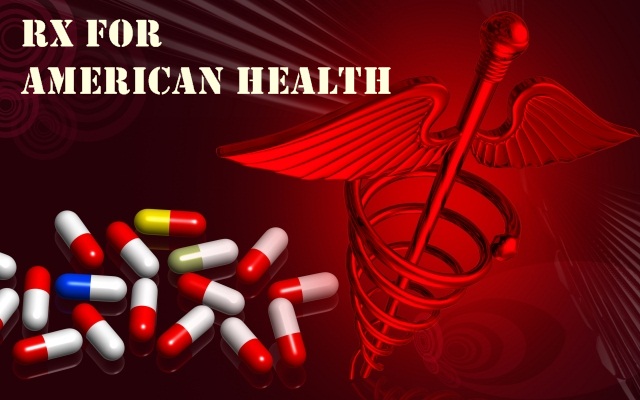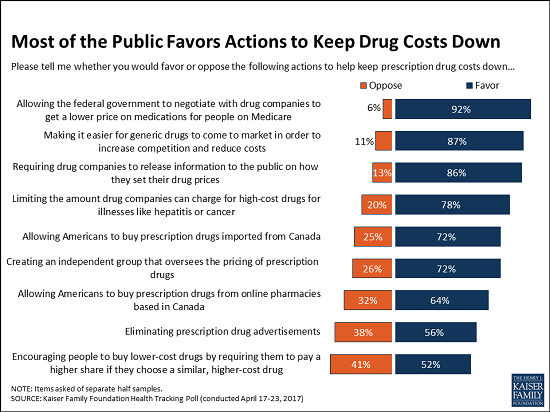The average annual cost of a specialty medication used on a
chronic basis exceeded $53,000 in 2013. This cost was greater than
the median U.S. household income of $52,250, more than twice the median
income of $23,500 for people on Medicare, and almost three-and-a-half
times higher than the average Social Security retirement benefit of $15,526 over
the same time period.
"Specialty drugs are among the most expensive on the
market, and are expected to be the fastest growing group of drugs over the next
decade," said Debra Whitman, PhD, AARP's Chief Public Policy Officer.
"These exorbitant prices and price increases can be
financially disastrous, especially for people on fixed incomes. Americans
cannot continue to absorb the astronomical costs associated with these products
indefinitely."
The AARP PPI report also found that specialty drug prices are
considerably higher than other drug prices. In 2013, the average annual cost
for specialty prescription drugs was 18 times higher than the cost of brand name prescription drugs and 189 times higher
than the cost of generic prescription drugs.
Specialty drugs generally include drugs used to treat complex,
chronic health conditions.
They often require special care in how they are administered
to patients, as well as in how they are handled and stored. Many specialty
drugs treat conditions that are common among older people, including rheumatoid
arthritis, multiple sclerosis, and cancer.
The new report, the third in a series of reports on
prescription drug prices, examined the retail prices of 115 specialty
prescription drugs most widely used by older Americans.
The analysis included 47 different drug manufacturers and
covered 30 different therapeutic categories. The vast majority (85%) of the 115
specialty drugs studied are used to treat chronic health conditions.
Highlights of the Rx Price Watch Report
Based on the retail prices of 115 widely used specialty prescription drugs in 2013:
Based on the retail prices of 115 widely used specialty prescription drugs in 2013:
- Average
annual cost for one specialty medication used on a chronic basis: $53,384
- Average
annual cost was 18 times higher than the cost for brand
name drugs: $53,384 vs. $2,960
- Average
annual cost was 189 times higher than the cost for
generic drugs: $53,384 vs. $283
- Average
annual price increase was more than 7 times higher than
inflation: 10.6% vs. 1.5%
"We know that nearly two-thirds of older Americans use
three or more prescription drugs on a regular basis," saidLeigh
Purvis, MPA, PPI Director of Health Services Research and co-author of the
new report.
"The average price of just one specialty drug now
outstrips what many families earn in a year. These high drug prices can make it
extremely difficult for patients to afford the treatment they need to stay
healthy."
According to the AARP PPI report, policy makers interested in
reducing the impact of high drug prices should focus on solutions that balance
the need for pharmaceutical innovation with the need for improved health and
the financial security of consumers and taxpayer-funded programs like Medicare
and Medicaid.
"Rx Price Watch Report: Trends in Retail Prices of Specialty
Prescription Drugs Widely Used by Older Americans, 2006 to 2013"
Methodology
AARP's Public Policy Institute, in collaboration with the PRIME Institute at the University of Minnesota, developed a group of 115 specialty prescription drug products most widely used by older Americans. Using data from the Truven Health MarketScan® Research Databases, the report analyzed retail price changes between 2006 and 2013 for these 115 specialty drugs.
Additional Resources
- Rx Price Watch Report: Trends in Retail Prices of Generic
Prescription Drugs Widely Used by Older Americans, 2006-2014
- Rx Price Watch Report: Trends in Retail Prices of Brand
Name Prescription Drugs Widely Used by Older Americans, 2006 to 2013
- AARP Drug
Compare Tool – Learn the difference and similarities between any
two Rx or over-the-counter medications.
- AARP
Bulletin article, "Feeling the Pain of Costly Prescription Drugs"
(Jan/Feb 2015)









